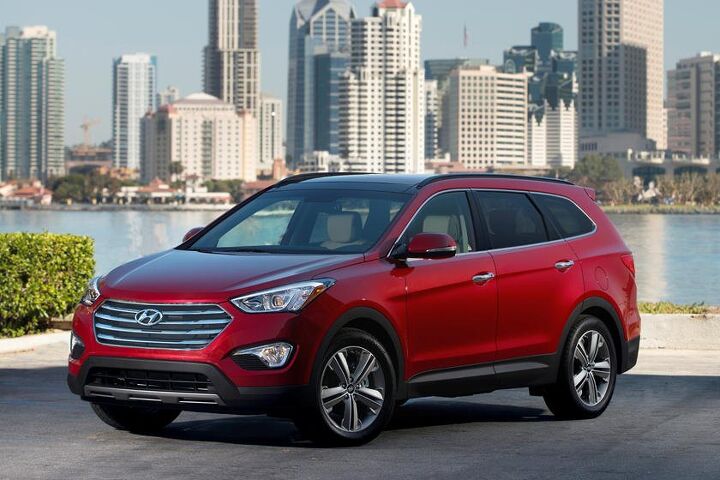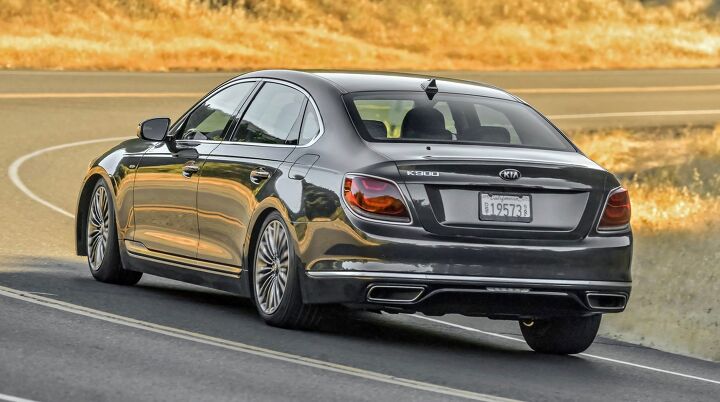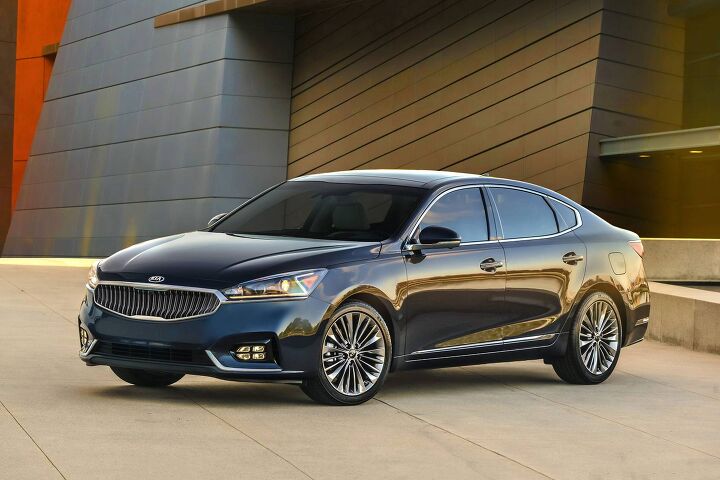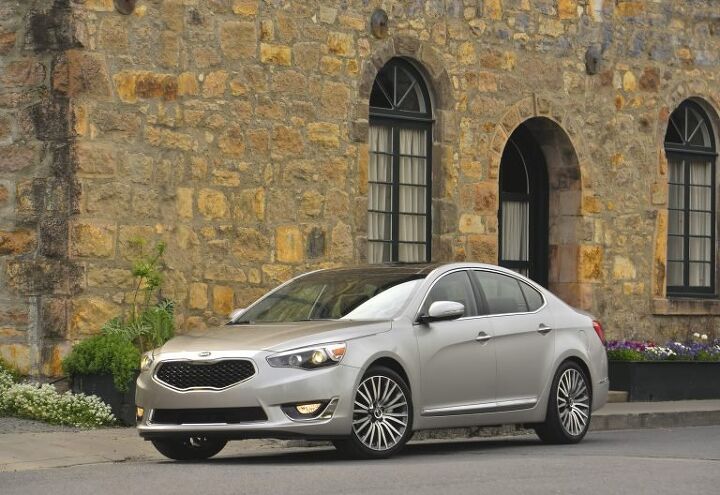#kia
Columbus, Ohio City Attorney to Sue Hyundai, Kia Over Thefts
Columbus, Ohio City Attorney Zach Klein said earlier this week that he intends to file a lawsuit against Hyundai and Kia.
QOTD: Have Korean Cars Shed Their Reliability Reputation?
Given the recent legal struggles that Hyundai and Kia have been facing, I started wondering if the two brands had shed their past reputation for reliability -- or lack thereof.
Report: Engine Issues Will Cost Hyundai and Kia $2 Billion In Q3
Hyundai Motor Group's Theta II GDI engines are costing the company a fortune, with the company recently acknowledging the troubled powertrain will leave the manufacturer $2 billion leaner for the third quarter of 2022 alone. While that hit will be split between Hyundai and Kia brands, it still represents a healthy slice of their quarterly revenue.
Hyundai Announces Future Roadmap: Subscriptions, Software Defined Vehicles, and OTA Updates
Hyundai Motor Group – which includes Hyundai, Kia, and Genesis – has announced a comprehensive plan for its products from 2025 onward with the key components being perpetual connectivity, subscriptions, and software-defined automobiles. It sounds benign but actually represents a major shift in the way the company operates by calling for widespread platform standardization and leaning into novel revenue streams reliant on vehicles existing on its corporate network.
Hyundai and Kia's Decade of Very Troublesome Engines Continues
In what’s only the latest in a long history of engine-related legal battles in the form of recalls, individual owner lawsuits, and class action suits, Hyundai and Kia find themselves entangled in the latter once more. This time, the list of the affected vehicles is much larger than in previous instances. It seems the calendar has now crossed the decade mark with regard to major engine issues in Hyundai and Kia vehicles. Oh, and they’re also super easy to steal, too.
Automakers Are Drastically Underreporting Average Emissions: Report
Dieselgate slashed a gaping hole in the assumption that automakers were genuinely invested in building more efficient cars, but it’s hardly the only flimflammery going on behind the scenes. A recent report from Transport and Environment, a European NGO pushing for cleaner transport, found that many automakers are underreporting global emissions by as much as 115 percent.
Summer of Theft Creating Bad Publicity for Hyundai, Kia
Following an internet trend that proliferated on TikTok over the summer, there’s been an alleged surge of vehicle thefts targeting Kia and Hyundai products. The issue reportedly began with a video tutorial recorded in Milwaukee showing how to steal the cars by shoving a connected USB cable into a cracked-open ignition. But the resulting problem has spread to major cities across the country, often with rowdy teens – known as “ Kia Boyz” – taking random cars for little more than joy rides.
Rare Rides Icons: The History of Kia's Larger and Full-size Sedans (Part XIV)
Over 14 installments, we’ve finally reached the conclusion of our coverage of Kia’s midsize and large sedans. The Korean manufacturer’s original offerings were borrowed from other companies, most often Mazda. It’s been a long journey, but we finish our tale today with a promising-looking front-drive sedan that’s off-limits to North America. You might never have heard of it.
Rare Rides Icons: The History of Kia's Larger and Full-size Sedans (Part XIII)
Last time in our Kia large car saga, we learned much about the second-generation K9. Kia’s large, rear-drive luxury sedan wore K900 badging most places (including North America) but was also called Quoris on occasion. After a first generation that failed to capture the interest of global consumers, Kia went bigger and better for its second attempt.
The larger, more luxurious, and more refined K900 debuted in 2018 for the 2019 model year. It was as good a car as Kia could offer, a statement that was printed with an asterisk: From inception, any Kia flagship had to be lesser than its Genesis (nee Hyundai) sibling. Not as large, not as luxurious, not as showy, not as expensive, and without a long-wheelbase limousine. Let’s find out how it fared.
Lotta Auto Recalls This Week
If the industry is trying to shake the growing assumption that modern vehicles aren’t as reliable as their predecessors, it certainly did a poor job of it this week.
Rare Rides Icons: The History of Kia's Larger and Full-size Sedans (Part XII)
In our last installment of Kia’s large sedan history, we took a look at the second generation Cadenza. With its second salvo at the likes of the Toyota Avalon and the Buick Lacrosse, Kia planned to capture the near-luxury sedan customer who cared about value. Unfortunately, the Cadenza didn’t excel at anything in particular, and failed to stand out against more established competition.
A similar story played out a few years before when Kia introduced the first full-size rear-drive luxury car it ever designed in-house. Called the K9 (Quoris or K900 elsewhere), the large sedan shared a platform with the new rear-drive Hyundai Equus. Both sedans were the flagship offerings at their respective brands.
The Equus was flashy and almost American-inspired, while the K9 was conservative and understated. But it turned out a large and anonymous looking luxury car was not to the taste of most customers. Even in its home market, buyers vastly preferred the Equus and its large winged hood ornament. What was Kia to do?
Rare Rides Icons: The History of Kia's Larger and Full-size Sedans (Part XI)
Kia’s second attempt at a K7 (Cadenza in North America) arrived at a time when the company fully embraced a styling language of its own. More upscale and nicer to look at than the derivative generation of 2010 to 2016, the new Cadenza debuted in all global markets for 2017. Kia was hopeful the second Cadenza would sell better than the first one, particularly in North America. Any predictions on how that went?
Rare Rides Icons: The History of Kia's Larger and Full-size Sedans (Part X)
As we return to the history of Kia’s large sedans, we find ourselves in the midst of the 2010s. When the full-size and rear-drive K900 was introduced for the 2015 model year, Kia’s front-drive comfort option, the K7 (Cadenza to you), was in the midst of its first generation. A replacement for the unloved and ugly Opirus (Amanti to North Americans), the K7 ushered in sophisticated but bland Euro-centric styling from Peter Schreyer upon its launch in 2010.
Cadenza didn’t make its way to the North American market until 2014, and debuted with slightly sharper styling and a nicer interior via a mid-cycle refresh. Kia took its time in bringing the Cadenza to the North American market, as they wanted to be sure they got it just right.
In the end, the first Cadenza fell between the soft rock of the Lexus ES and the hard place of the Nissan Maxima. Additionally, it lacked the prestige to compete with other large front-drive upmarket offerings of the time. The new cadenza lasted only three model years in North America, as Kia was ready for an all-new generation K7/Cadenza in 2017.
Rare Rides Icons: The History of Kia's Larger and Full-size Sedans (Part IX)
It’s time once again for more Kia large sedan goodness. Like last time, we pick up in the early 2010s. Kia’s second full-size sedan developed under Hyundai’s controllership was the K7, or Cadenza in all markets outside South Korea. Pitched as a value-priced premium front-drive car, it competed against the likes of the Toyota Avalon and Nissan Maxima, but lacked any defined comfort or sporty characteristics. Cadenza also had a bland corporate design courtesy of the company’s new Euro-like styling mission, and former VW designer Peter Schreyer.
Shortly after the Cadenza went on sale, Kia turned its sights toward an even larger sedan: A new rear-drive one to occupy the luxury space, a class above the Cadenza. It was the largest car Kia offered in nearly two decades, the first rear-drive Kia since the (Mazda Sentia) Kia Enterprise of 2002, and the first rear-drive sedan Kia ever sold in the North American market. It’s time for K9.
Rare Rides Icons: The History of Kia's Larger and Full-size Sedans (Part VIII)
We return to Kia’s large sedan history today, at a point shortly after the launch of the K7. Kia’s full-size front-drive for the 2010s, the K7 was called Cadenza in all export markets, and was a successor to the unfortunately styled Opirus (Amanti in North America). Kia hired Peter Schreyer from his longtime employment at Volkswagen Group in order to usher in a new stylistic era at Kia.
Though it went on sale for the 2010 model year, Kia wasn’t quite ready to send the Cadenza to the North American market. With the market’s general rejection of the Amanti in mind, Kia called on Schreyer to refresh the Cadenza and lux it up before its North American launch.






























Recent Comments